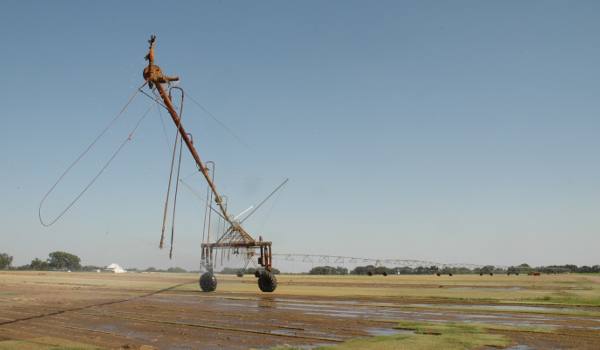November 28, 2012

As drought conditions plateaued for most of the state, Texas producers were wrapping up cotton and grain sorghum harvests and hoping for rain to help moisture-stressed wheat and winter small grains, according to Texas A&M AgriLife Extension Service weekly reports.
Though conditions were certainly an improvement over last year, drought persisted in most of the state, according to the U.S. Drought Monitor. The biggest improvement was in levels of severe, extreme and exceptional drought, which were 98 percent, 89 percent and 65 percent respectively as of Dec. 15, 2011.
By late November, 50 percent of the state was still experiencing severe drought, but only 23 percent was in extreme drought and less than 8 percent in exceptional drought. But nearly 76 percent of the state was still under moderate drought conditions.
Some of the hardest hit regions remained the Panhandle, South Plains and Rolling Plains, areas where much of the state’s winter wheat is grown.
“Extreme drought, and dryland wheat is in bad shape, some dying,” said Burton Williams, AgriLife Extension agent for Hansford County, north of Amarillo.
(There is) very little wheat pasture at this time, only irrigated wheat pasture.”
“We need moisture,” said Herbert Sprague Jr., AgriLife Extension agent for Lipscomb County in the northeast corner of the Panhandle. “Emerged wheat is going backwards.”
“Most sorghum and cotton harvesting operations are now completed, with only a few fields remaining to be harvested,” said Mark Brown, AgriLife Extension agent for Lubbock County, Lubbock. “Moisture is needed across the area. Wheat continues to show signs of moisture stress except in irrigated fields.”
“With the wheat crop looking the way it is now, cattle owners are starting to worry about having to sell the stock they recently purchased and cut back to the bare minimum,” said Brady Evans, AgriLife Extension agent for Foard County, southeast of Childress.
“The lack of rain is really taking its toll on everything,” said Langdon Reagan, AgriLife Extension agent for Wilbarger County, near Wichita Falls. “The wheat is really hurting, and cotton harvest is going to be short and fast. A lot of stocker cattle that were brought in are starting to leave the county.”
More information on the current Texas drought and wildfire alerts can be found on the AgriLife Extension Agricultural Drought Task Force website at http://agrilife.tamu.edu/drought/.
You May Also Like




